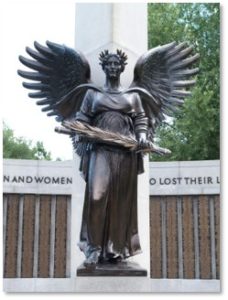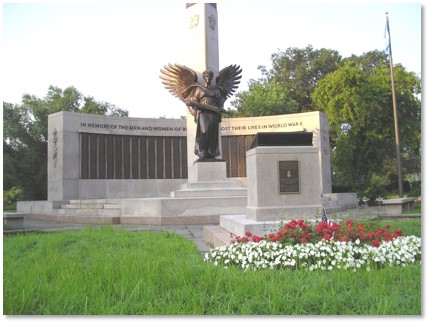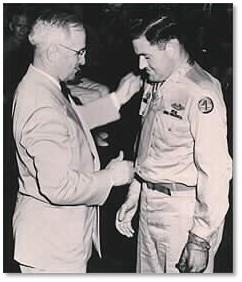Saturday is Veterans Day and our country’s veterans give us many things for which to be thankful. I do not have room in this blog to list them all but I am personally very thankful for anyone who serves in the armed forces and is willing to put him- or herself in harm’s way to protect my freedom and my safety.
Boston’s War Memorials
 Boston has many veterans’ memorials around the city to honor those who have died in conflicts from the Boston Massacre to the wars Iraq and Afghanistan. Perhaps the most comprehensive of these tributes is the Veterans Memorial Part, which resides in a place that is, while part of the Emerald Necklace, out of the way for most people.
Boston has many veterans’ memorials around the city to honor those who have died in conflicts from the Boston Massacre to the wars Iraq and Afghanistan. Perhaps the most comprehensive of these tributes is the Veterans Memorial Part, which resides in a place that is, while part of the Emerald Necklace, out of the way for most people.
Unless you live in Fenway-Kenmore neighborhood or the Museum District, you have probably never visited the Back Bay Fens. When I was going to Northeastern University, they had an unhealthy reputation so I never did more than skirt the edge. Fortunately, that situation has changed and the Fens have again become the vibrant neighborhood that Frederick Law Olmsted intended when he designed the park in 1879.
Veterans Memorial Park
Veterans Memorial Park, which commemorates servicemen and women in three different wars, can be found near the Kelleher Rose Garden. The memorial comprises three different monuments arranged in a circle.
The largest and oldest piece is the World War II monument designed by Tito Cascieri. A granite wall with bronze plaques holding the names of the fallen curves behind a plinth stage and lectern. Above the names, bronze letters dedicate the monument “In memory of the men and women of Boston who lost their lives in World War II.
Standing on the plinth, a large bronze angel sculpted by John F. Paramino holds a sheathed sword and a palm frond. Her flared wings embrace a granite obelisk that is capped with bronze stars.
The money to build Veterans Memorial Park came from the George Robert White Fund. The World War II Veterans Memorial is flanked in the circle by monuments honoring the veterans of two other wars.
Korean War Veterans Memorial
The far smaller Korean War Memorial has a stone plaza, into which a map of Korea had been embedded, Two stone slabs on either side serve benches. This monument has two columns with the names of veterans engraved in them. The word “Korea” tops it along with the years of the conflict: 1950–1953.
Vietnam War Veterans Memorial
The Vietnam War Memorial has a similar design with three columns listing the names of veterans. Its stone plaza has an embedded map of Vietnam in darker stone. Two stone-slab benches flank the plaza. On top it says “Vietnam” and the years of the war: 1962–1975.
Congressional Medal of Honor Recipient
On the World War II lectern, a plaque dedicates the entire Veterans’ Park to Sergeant Charles Andrew MacGillivary, who enlisted in Boston, earned the Congressional Medal of Honor for saving his unit during the Battle of the Bulge. This is how the Congressional Medal of Honor Society describes his
“He led a squad when his unit moved forward in darkness to meet the threat of a breakthrough by elements of the 17th German Panzer Grenadier Division. Assigned to protect the left flank, he discovered hostile troops digging in. As he reported this information, several German machine guns opened fire, stopping the American advance.
Knowing the position of the enemy, Sgt. MacGillivary volunteered to knock out one of the guns while another company closed in from the right to assault the remaining strong points. He circled from the left through woods and snow, carefully worked his way to the emplacement and shot the two camouflaged gunners at a range of three feet as other enemy forces withdrew. Early in the afternoon of the same day, Sgt. MacGillivary was dispatched on reconnaissance and found that Company I was being opposed by about six machine guns reinforcing a company of fanatically fighting Germans.
His unit began an attack but was pinned down by furious automatic and small-arms fire. With a clear idea of where the enemy guns were placed, he voluntarily embarked on a lone combat patrol. Skillfully taking advantage of all available cover, he stalked the enemy, reached a hostile machine gun and blasted its crew with a grenade. He picked up a submachine gun from the battlefield and pressed on to within 10 yards of another machine gun, where the enemy crew discovered him and feverishly tried to swing their weapon into line to cut him down. He charged ahead, jumped into the midst of the Germans and killed them with several bursts.
Without hesitation, he moved on to still another machinegun, creeping, crawling, and rushing from tree to tree, until close enough to toss a grenade into the emplacement and close with its defenders. He dispatched this crew also, but was himself seriously wounded.
Through his indomitable fighting spirit, great initiative, and utter disregard for personal safety in the face of powerful enemy resistance, Sgt. MacGillivary destroyed four hostile machineguns and immeasurably helped his company to continue on its mission with minimum casualties.”
In this engagement, Sgt.MacGillivary killed 36 Nazi soldiers and lost his left arm. After the war, he MacGillivary lived in Braintree and worked on behalf of veterans’ causes until his death at the age of 83. He is buried in Arlington National Cemetery.
Directions to Veterans Memorial Park
To find Veterans Memorial Park, you can enter the Back Bay Fens from the south at the intersection of the Fenway and Forsyth Way just east of the Boston Museum of Fine Arts. Cross over the Agassiz Bridge and bear right when the path forks. A path leads to it on the right.
 Or you can enter the fens from the north at Park Drive just west of Agassiz Road. Look for the path to the memorial on your right.
Or you can enter the fens from the north at Park Drive just west of Agassiz Road. Look for the path to the memorial on your right.
- Nearest T Stops: Kenmore and Fenway to the north and Museum to the south, all on the Green Line
- Nearest Parking: You can park at the Prudential Center and walk down Boylston Street or in the Museum of Fine Arts parking garage on Museum Road and walk along the Fenway behind the museum to the Fens entrance at Forsyth Way.



